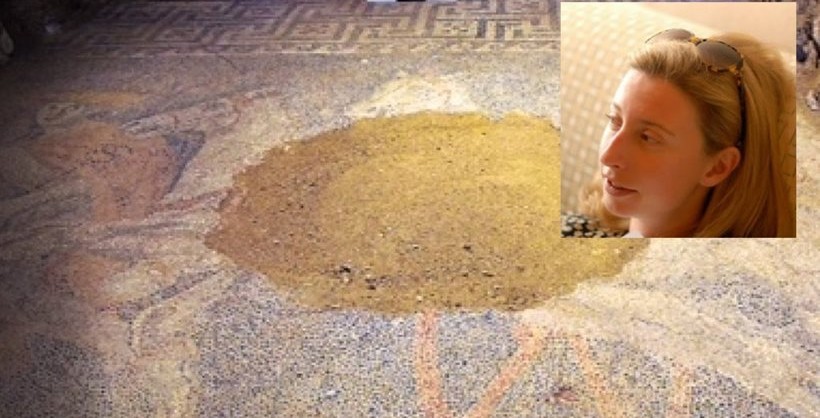The American archaeologist and historian who lives and works in England, following a new announcement made by the Ministry of Culture she posted in her personal blog a first interpretative approach.
And so she begins…
Logic and years of experience tell me that there is a whole lot more to find at Amphipolis.
I’m used to looking at the material from sites before a press release has been written, so for Amphipolis I look at the photos first.
So first off I see much rougher limestone blocks than the beautifully cut marble used elsewhere on the tomb … and evidence that the tomb could go down further or that these could be the foundations; but if they are foundations, where is the finished floor that covered them? The earth underneath the blocks has many very clear layers of stratigraphy, with several that appear in the photograph to be distinctly different.
Then I see a door. The side of the door facing the viewer is rough, so this is the side which would have been by the doorframe and hidden.
Then I note the design of the door is very different from the other photographs of the door with large ‘nails’ (or small shields): is this a different door or the reverse of the same door showing the interior view? The door looks thinner, but this could be an optical illusion due to the design and angle.
This photo tells me less about the excavation, more about what the archaeologists are thinking.
Then I look at the statement.
“revealed the foundations of the side walls. The mounting wall sits on artificial embankment of well compacted gravel with clay, thickness about 0.40 m” which confirms that the yellowish band is clay.
They go on to confirm that they found an artificial trench showing that there was at least an attempt to dig down into the rock. Silty sand like the rest of the tomb. They have already excavated 1.40 m down, and that they say they have not reached the threshold suggests that it might go down further?
The second marble door was found in this pit, further emphasizing the idea that it was ‘open’ when the tomb was back-filled with soil.
The rest is just more details of technical work and shoring up.
I don’t believe I’m always right, sometimes I’m wrong. And I am a great believer in discussing ideas as they can sometimes go nowhere and sometimes lead to a solution.
This map shows Casta in red, where the Lion was erected in the ’30s in green and the yellow thunderbolt of Zeus to show very roughly where the material was found in the 1930s.
The destruction of the tomb and the movement of the blocks is almost a bigger puzzle than who built it. Yes, two monuments sounds mad, and I can’t think of a precedent, but then so little at Amphipolis has precedent and that’s what indicates it was an important tomb …
Antibes in France was originally Antipolis – anti-city, not in the negative sense, but as a pendent to and pre- echo of a larger city, possible Nikeia (Nice) or more likely Cannes.
The idea of a smaller monument to complement the larger one has no equivalent that I can think of. But given that Alexander was worshiped alongside his friend Hephaestion in many of his cults in Egypt, and that one of the things Alexander did before he died was order a tomb for Hephaestion … it could almost serve as a ‘gateway’ to the larger heroon, the way gates to sanctuaries served?
No, I do not think that there are two tombs, but I also think it is worth exploring ideas and it is not impossible. It is only by discussing our ideas that we can clarify our thoughts.






































